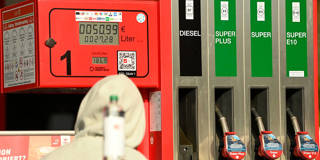During the 2008 global economic crisis, a recurrent criticism of the eurozone framework was that it meant that the European Central Bank was “the only game in town.” Today, by providing income support to households, governments are helping to prevent a 1970s-style wage-price spiral – and making the ECB’s job much easier.
DUBROVNIK – With energy prices high and rising, and inflation soaring, it is starting to look like the late 1970s all over again. But appearances can be deceiving.
The similarities are obvious. In 2022, like in the 1970s, an energy-price shock has led to a sustained increase in the prices of many other goods. The so-called core inflation rate, which strips out volatile energy and food prices, is now approaching 6% in the United States and 4% in the eurozone. And fears are mounting that, as in the 1970s, this trend will prove persistent.
But we are hardly living through a repeat of the 1970s. One key difference lies in labor markets. Back then, widespread wage indexation meant that higher energy and other prices led automatically to an equivalent increase in wages. Where wage indexation was less important, unions achieved the same outcome, as they refused to accept any deterioration in their members’ living standards.

DUBROVNIK – With energy prices high and rising, and inflation soaring, it is starting to look like the late 1970s all over again. But appearances can be deceiving.
The similarities are obvious. In 2022, like in the 1970s, an energy-price shock has led to a sustained increase in the prices of many other goods. The so-called core inflation rate, which strips out volatile energy and food prices, is now approaching 6% in the United States and 4% in the eurozone. And fears are mounting that, as in the 1970s, this trend will prove persistent.
But we are hardly living through a repeat of the 1970s. One key difference lies in labor markets. Back then, widespread wage indexation meant that higher energy and other prices led automatically to an equivalent increase in wages. Where wage indexation was less important, unions achieved the same outcome, as they refused to accept any deterioration in their members’ living standards.